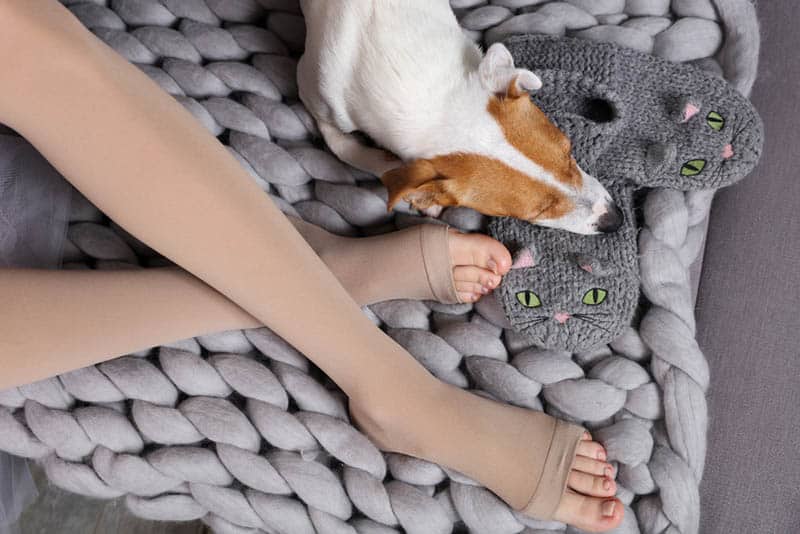Kankles. The mere mention of the word and an instant image flashes of a highly pregnant woman with inflated feet ready to bust out of her open toe sandals at any second.
But there are a couple other maternity discomforts way up there on the rankings (apart from the all-too-common morning sickness!) For instance, let’s talk leg pain and swelling, blood clots, and even those ghastly varicose veins.
We can all agree that puffy legs and spider veins are just not sexy – let alone convenient. And the worst part is, many first time moms-to-be don’t even know what pregnancy side effects may be awaiting them.
That’s why we’re here to help get you up to speed on everything you need to know about compression socks in pregnancy.
Let’s delve in, shall we?
Let’s get the theory out of the way…
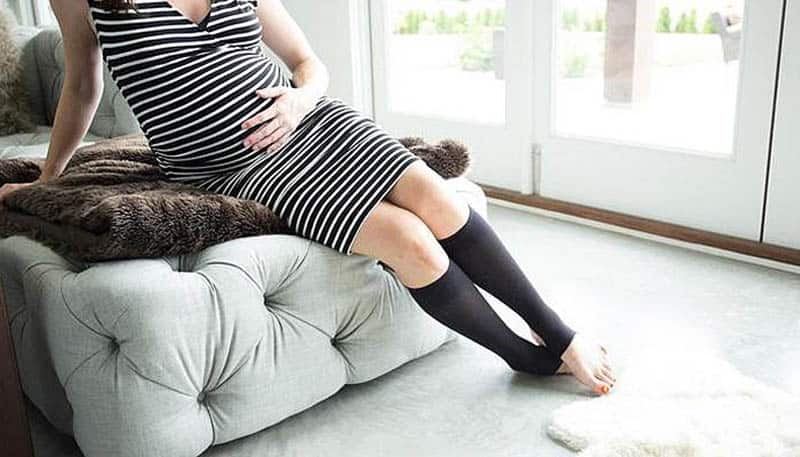
While pregnancy is a special time for expectant parents, the changes that occur in a woman’s body can take its toll and no doubt cause a fair share of stress and complaints.
Rampant pregnancy hormones and your ever-growing baby will have an effect on how your body will look, feel, and function.
When you’re expecting, the body slows down its normal processes in order to make way for the baby.
During pregnancy, fluid accumulates in the body: the fetus grows (which has its own circulatory system), amniotic fluid forms, and the mother’s blood volume increases.
As your baby develops, the uterus will also put increasing pressure on your vena cava (the vein that transports blood from your legs and feet to your heart), which will drastically slow down blood flow in your body.
Against the background of all these processes, a woman’s body accumulates fluid in her own tissues – this is how edema occurs.
Unfortunately, edema (swollen and painful legs) is a normal part of pregnancy.
In the third trimester, many women experience symptoms like severe fatigue, aching legs, and swollen feet and ankles, as well as an overall sluggishness that can affect day-to-day activities and movements.
Varicose veins
Pregnancy hormones are also likely culprits for varicose veins.
It’s reported that up to 33% of first time pregnant moms and 55% of women who’ve had two or more full-term pregnancies are prone to developing them.
Varicose veins usually develop around the beginning of the second trimester of pregnancy due to:
- a change in the consistency of blood;
- increase in blood volume;
- loss of venous wall tonicity (elasticity and tone); and
- increased pressure on leg veins because of the baby’s position.
A recent study was conducted in Switzerland to evaluate the effectiveness of the use of compression socks to prevent the development of varicose veins during pregnancy.
In this work, the use of these socks to prevent the development of these veins was recognized – the women who wore them had much less visible veins than pregnant women who did not wear them.
In addition, the women pointed out that they experienced significant symptom relief.
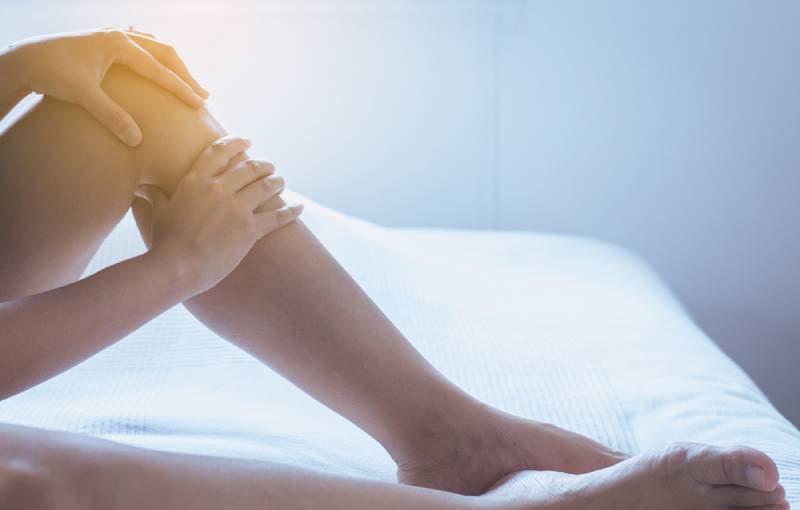
Blood clots and DVT
Among the plethora of changes your body goes through in preparation for birth, a pregnant woman’s blood is also more inclined to clot as a defense mechanism against losing too much blood during labor.
Leg pain and swelling can indicate deep vein thrombosis (DVT), which is a very serious condition and requires immediate medical attention.
May Clinic identifies DVT symptoms such as pain, redness or discolored skin, and a feeling of warmth.
DVT occurs when blood clots develop in the legs and pelvis, which can break off, make their way to your lungs, and cause a pulmonary embolism.
If you experience chest pain and shortness of breath, seek medical help immediately.
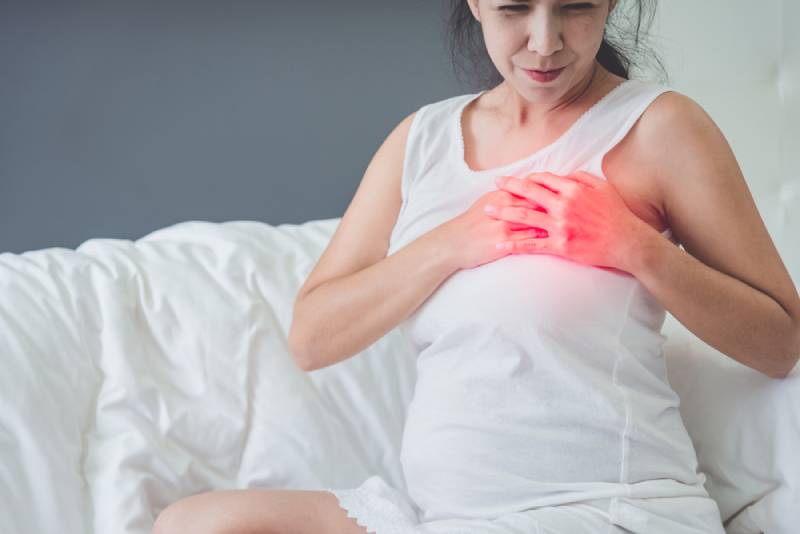
Water retention
It’s no secret that our body is made up of 70-90% water, but do you know that much more fluid circulates in the body of a mom-to-be than her pre-pregnant self?
Because of the hormonal changes associated with pregnancy, sodium accumulates in the blood and soft tissues.
And as is widely known, sodium has the ability to attract and retain water.
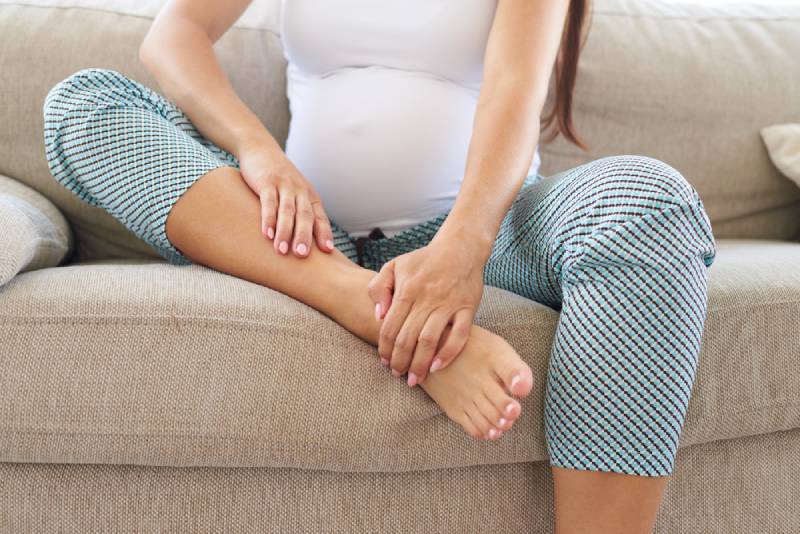
Leg cramps
Leg cramps (sometimes referred to as pressure or pinching sensations) occur during pregnancy as a result of several factors, including increased weight gain, which can add extra pressure to your leg muscles.
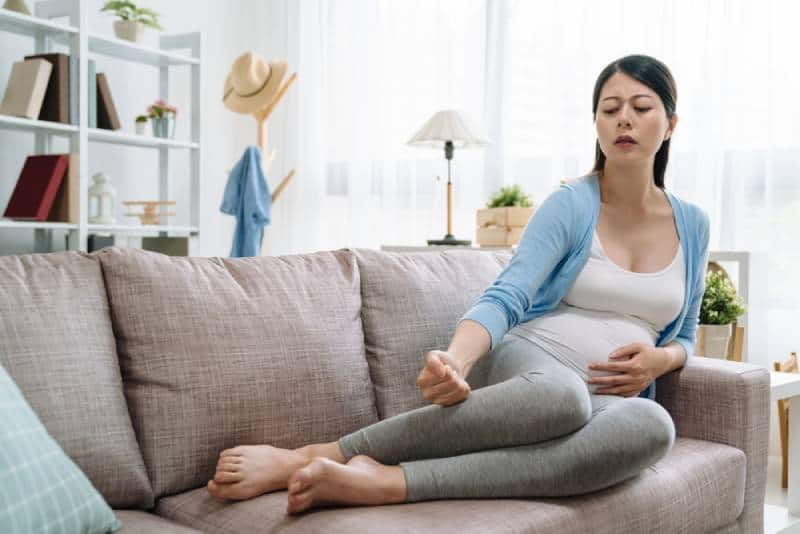
A growing baby also places additional pressure on the blood vessels and nerves that go to the legs.
Expectant women experience leg pain more commonly at night and in later pregnancy stages.
What are compression socks?
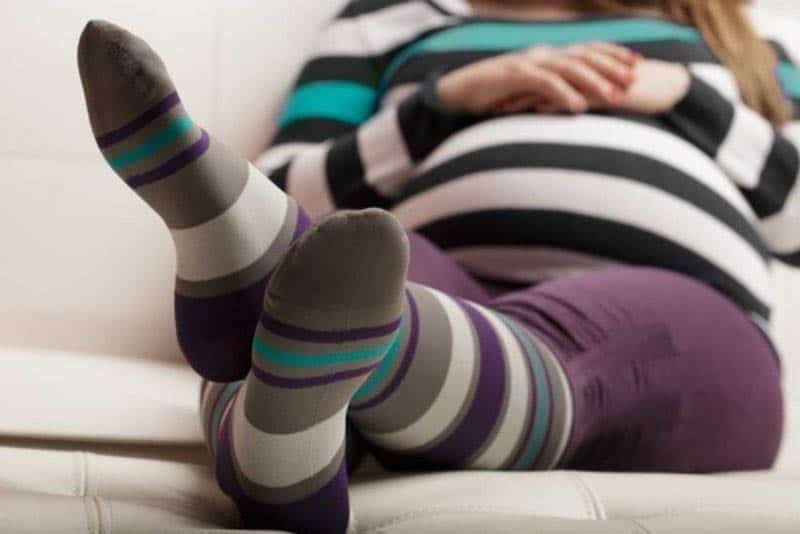
Despite edema and varicose veins being an expected part of pregnancy, these side effects are often uncomfortable – sometimes downright painful and unbearable.
Doctors therefore often prescribe medical grade compression stockings (also known as compression socks, compression hose, or maternity stockings) specially designed to prevent and alleviate these pregnancy-related conditions.
Compression stockings are specialized therapeutic and preventative hosiery products made of special weaving knitwear that have a compression effect.
They help by compressing the veins, which keeps the vein valves in line, thereby allowing proper blood flow to the heart.
Compression socks effectively work to reduce blood from collecting in one area, in turn promoting healthy blood flow all over the body.
Graduated compression socks correctly distributes the compression force, providing the necessary compression levels to a specific area.
The maximum pressure is at the ankles (100%) and gradually becomes less towards the knees (60%) and hips (40%).
Because of correct compression levels, the blood flow is normalized, and swelling and pain in the lower extremities are eliminated.
Generally speaking, around 20-30mmHg compression stockings have proven useful in helping to improve blood circulation during pregnancy, during labor, and the weeks following birth.
If you’re interested in getting maternity compression socks, it is important to first consult with your physician, who will be able to prescribe the best compression socks according to your individual condition (if any) and body.
Why to wear compression socks
- STYLE AND CONFIDENCE ON YOUR LEGS – Finally! A Durable Compression Sock designed to last, without compromising quality or Comfort. Double stitched Fabric your legs will thank you. Feel the immediate Comfort and remarkable design of your new Stamina Long Sock Tights. The Perfect Work, Cycling, or Ski Socks. Quality stitched & Easy to get on even though they are a compression sock! They Wash well without losing compression keeping all the Excellent vascular toning benefits.
- TAKE YOUR GAME TO THE NEXT LEVEL – Comfortable material and careful construction. No stitches in places where theyll rub or rip together. Stay put Cuffs Soothing feeling at the bottom and sides of foot with no pinching seen with lesser quality socks without ankle support. Fall in love with your new Stamina socks easy to pull on. and they breath! Use in extremely hot weather crossfit through mud water wall/crawl/rope climbs and half marathons. Perfect for extreme races and long runs!
Prices pulled from the Amazon Product Advertising API on:
Product prices and availability are accurate as of the date/time indicated and are subject to change. Any price and availability information displayed on [relevant Amazon Site(s), as applicable] at the time of purchase will apply to the purchase of this product.
As one of the most effective, convenient treatment and prevention methods for venous-related conditions, compression socks come with numerous benefits and little to no drawbacks:
Pros:
- Helps to ease the increased load on the legs
- Prevents varicose veins
- Reduces swelling and risk of blood clots
- Improves blood flow and oxygen supply to the working muscles, and even promotes movement
- Relieves pain and reduces instances of muscle cramps
- Even recommended for pregnant women who are not at high risk for any serious venous diseases
- No side effects on mom or baby (unlike a number of diuretics that are contraindicated in pregnancy)
- Combines wellness with practicality – no need to pull it over an expanding belly, which helps for those countless trips to the bathroom.
- Convenient and attractive – now readily available in different lengths and ranges of pantyhose or leggings
- Helps to sculpt and shape the body, giving pregnant women a confidence boost to go about their day-to-day business
- Lightweight, breathable, and durable – fabric is stronger than that of ordinary tights
Moisture-wicking fabric – helps to keep feet and skin dry
Cons (reported only by a minority of expectant moms)
- Difficult to put on and take off in the height of pregnancy (although at that stage, everything’s a chore!)
- Too tight, particularly for those who aren’t used to wearing tight-fitting garments
Itchiness and dry skin (depending on skin sensitivity and choice of fabric) - Uncomfortable in height of summer
When to wear compression socks in pregnancy
- FINALLY – COMPRESSION SOCKS THAT FIT JUST RIGHT - Tired of wasting money on overpriced compression socks that just aren’t sized right? We are too – which is why we designed our compression socks to provide the perfect compression (20-30mmHg), smoothly fit your calves/legs, and cover 4 different sizes with a wide range of calf circumferences and shoe sizes including yours (see the 4th image for the size chart)! You will LOVE our compression socks!
- IMPROVED BLOOD CIRCULATION WITH GRADUATED COMPRESSION – Our graduation compression technology (20-30mmHg) provides the ideal compression to provide the maximum boost to your blood circulation. Better oxygen circulation provided by our compression socks helps reduce lactic acid build up and aids muscle recovery in your calf, ankle, feet, and legs. Why let yourself suffer any longer? Let our compression socks help you promote recovery, reduce injury, and feel great again!
- GREAT INVESTMENT FOR YOUR FEET/LEGS (GREAT GIFT IDEA TOO!) – We spend so much time on our feet yet tend to neglect our feet/legs. Why settle for anything less than fast relief at a great value? And while you are at it, grab a few pairs for your family, friends, or loved ones as a gift that is functional and beneficial to their health! Also, a great gift to runners, athletes, fitness workouts, hiking, tennis, cycling, office workers, airplane travelers, or anyone on their feet all day!
Prices pulled from the Amazon Product Advertising API on:
Product prices and availability are accurate as of the date/time indicated and are subject to change. Any price and availability information displayed on [relevant Amazon Site(s), as applicable] at the time of purchase will apply to the purchase of this product.
From what trimester?
Many medical experts recommend wearing compression socks throughout pregnancy, starting right from the first trimester.
From as early as the fourth month, noticeable signs of blood stagnation may appear, constant fatigue is felt, swelling of the ankle and lower leg region is visible, and pulling sensations in the calf area are amplified by the end of the day.
Therefore, in order to prevent the development of varicose veins and avoid complications, regular use of compression socks is proven beneficial at all stages of pregnancy.
At what time of day?
Edema occurs most often in hot weather and late in the evening, especially if you’ve spent a long time on your feet.
So it’s recommended to put on your compression socks first thing in the morning before getting out of bed, and only take off upon retiring for the night.
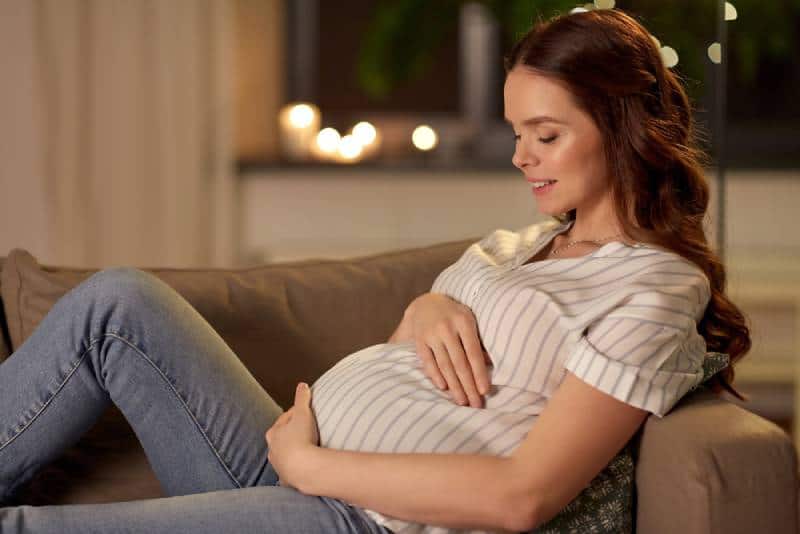
Of course, there are always exceptions to the rule – surely no doctor will expect you to wear compression socks when swimming or showering!
If for some reason you need to take off your compression socks during the day, then it’s advised to rather not try put them back on again, as your legs and feet will no longer be in the correct, “non-swollen” condition.
In this case, simply leave them off until the next morning.
It’s important to mention that in the later stages of pregnancy, it may become difficult to put on the stockings.
At this time, it’s best to ask for help from loved ones. After all, the quality of compression and the health of a pregnant woman depend on whether they are correctly worn.
Standing or sitting for long periods of time
As a preventative measure, it’s especially important that compression socks be worn by those who lead a sedentary lifestyle or, conversely, spend most of the day on their feet.
Also referred to as the “second heart,” the calf muscle works like a steady pump when you move and it pressurizes veins in the lower leg region.
This allows blood to flow back to your heart. If your job requires you to sit all day behind a desk, your calf muscles aren’t doing much at all, which can cause blood to pool in the lower legs.
The case is similar if you stand for long periods of time without much walking.
Many people who work in, for instance, hospitality and retail industries are excellently suited to wearing compression socks.
Long-haul trips

Along the same vein (pun intended) as above – where sitting for prolonged periods can cause blood to accumulate in the legs – long-distance travel has similar consequences.
The Centers for Disease Control and Prevention (CDC) issued a warning that sitting in a flight or car for 4 or more hours can significantly increase the risk of blood clots (deep vein thrombosis).
Along with wearing your compression stockings on long trips, the CDC further recommends that pregnant women should move their legs frequently, take stretch breaks from sitting, and even incorporate exercises like leg stretches and ankle flexes.
If not possible, a simple 5-minute walkabout for every hour sitting should do the trick.
When NOT to wear compression socks in pregnancy
Mojo Compression Socks
- 10% lycra
- Comfortable
- Unisex
Prices pulled from the Amazon Product Advertising API on:
Product prices and availability are accurate as of the date/time indicated and are subject to change. Any price and availability information displayed on [relevant Amazon Site(s), as applicable] at the time of purchase will apply to the purchase of this product.
If you have medical complications or simply don’t like the feel of compression stockings on your skin, refrain from wearing them to avoid complications or discomfort.
Compression socks are contraindicated in diseases such as:
- Schaemia (lack of oxygen in the limbs due to peripheral arterial disease, mainly affecting your legs)
- Peripheral neuropathy (nerve damage in hands, arms, feet, and legs)
- Congestive heart failure (weakened or stiff heart muscle that can’t pump blood around body efficiently)
- Diabetes (peripheral arterial disease and peripheral neuropathy are both complications of diabetes)
- Cellulitis (infection deep within skin that causes fluid build-up)
- Allergies (allergic reaction to garment’s fabric)
Types of compression stockings
- ✔ COMPRESSION THERAPY TECHNOLOGY - Provides true graduated compression to promote blood circulation and oxygen flow, prevent cramping, fatigue, swelling, help muscle recovery, spider, varicose veins and diabetic. Use them on a plane during that 9 hr flights or during that 6 mile walk. Your durable (20 - 30 mmHg) socks work with your routine. Feel the shock absorption effect instantly that really helps reduce fatigue and swelling in your lower leg!
- ✔ BLITZU KINESIOLOGY TAPING DESIGN - The One-of-a-Kind compression socks that combine the stability of kinesiology taping with the performance of compression fabric. Perfect for Relief of varicose veins or other leg swelling issues. Support your foot, heel, arch, ankle, and calf. Use it every day, night, or both. Prevent blood clots after surgery and Fits well unlike other Dr. prescribed Stiff varieties. The toe area won’t squeeze your aching toe joints. Instant comfort & support GUARANTEE!
- ✔ DESIGNED FOR EVERYDAY USE AND OUTDOOR ACTIVITIES - Bring more energy into your feet. Its perfect for jobs that require you to be on your feet a lot. Its also a must have for any leg intensive activity such as Marathon, Running, Hiking, Gym Fitness Training, Basketball, Cycling, Weightlifting and more. Perfect for extreme races and long runs!
Prices pulled from the Amazon Product Advertising API on:
Product prices and availability are accurate as of the date/time indicated and are subject to change. Any price and availability information displayed on [relevant Amazon Site(s), as applicable] at the time of purchase will apply to the purchase of this product.
All compression stockings are made exclusively by a seamless method from fabrics in which the body “breathes.”
The structure of stockings takes into account all the anatomical changes in the body of the expectant mother – ensuring you feel lighter and more comfortable.
They are made from various fabrics, including Spandex, Lycra, nylon, polyester, and wool.
They come in various lengths, sizes, and styles, such as open toe, lower leg, knee high, thigh high, and full-length.
Modern maternity compression stockings also have a very beautiful appearance.
Just a quick browse on Amazon and you’ll find a selection of beautiful lace elastic bands, silicone inserts, a variety of colors, and excellent quality to suit your wardrobe taste.
After all, a pregnant woman deserves only the best!
There are 3 main types of compression stockings:
- Anti-embolism stockings / Thrombo-embolic deterrent (TED) stockings: For post-surgery and when you are immobile. Requires a professional fitting.
- Graduated compression socks: Better for when you’re more mobile. Requires a professional fitting.
- Non medical grade hosiery: Elastic support socks and flight socks for potential relief from leg aches. No prescription needed. Available in most pharmacies and online.
Which compression level is right for you?
- COMPRESSION SOCKS- OR are these the new age IMPRESSION SOCKS? Gone are the times when Compression socks were viewed as medicinal products. We have mastered the art of combining fashion, technology and science to bring you the triple comfort without making you overpay. Our Compression socks are designed to be the be newest amongst the market while providing a greater comfort with breathable and moisture absorbent material.
- THE IMPRESSION SOCKS - The smooth heel and toe provide unmatched comfort. We carefully designed and manufactured our compression socks to provide premium support, comfort, and relief without compromising your mobility. Form fitting, lightweight, and breathable fabric features maintain joint stability regardless of activity.it is ideal for those who sit for long period during travel or at work.
- COMPRESSION BENEFITS – Compression techniques are scientifically proven to provide relief of varicose veins, Calf Compression or other leg swelling issues. Usable throughout the clock, our socks help prevent Blood clots after surgery & Fits well unlike socks with inflexible fabrics. The compression & support is perfectly located on Heel Foot Calves and the toe area wont squeeze your aching toe joints. Moisture wicking properties rapidly air dry in a few hours.
Prices pulled from the Amazon Product Advertising API on:
Product prices and availability are accurate as of the date/time indicated and are subject to change. Any price and availability information displayed on [relevant Amazon Site(s), as applicable] at the time of purchase will apply to the purchase of this product.
When looking at the various compression stockings available, have you ever wondered what these values mean: 30-40 mmHg or 40-50 mmHg?
Well, the acronym mmHg stands for “millimeters of Mercury,” which is a measure of the pressure (compression) that these averages apply to your limb.
There are stockings at different levels of compression to meet the individual needs of patients.
As there are various conditions that may need the help of compression stockings to avoid complications or relieve symptoms, manufacturers have developed these garments, each with a different level of compression.
For example, a patient with lymphedema or DVT needs socks with a firmer fit in the higher number range (at least 30-40 mmHg), while for someone who needs to remain seated or be on their feet for extended periods, mild compression socks of lower range (e.g. 15-18 mmHg) is most often all that’s needed.
It’s important to use the compression level that has been prescribed according to your condition in order to get the best results.
That’s why it’s best to consult your doctor, gynecologist, or phlebotomist to find out what the best option is for you.
In conclusion
Pregnancy is a very special moment in the lives of women, but it also involves certain changes and possible complications that aren’t exactly pleasant.
Compression stockings are ideal for pregnant women struggling with swollen, painful legs.
So much so that it’s normal for gynecologists to recommend it to avoid fluid retention that can occur in the legs during the entire duration of pregnancy.
The stockings, in these cases, not only help relieve problems such as swelling and varicose veins, but also improves the visual appearance.
Nowadays, you can find a wide range of styles and colors, in addition to different sizes and lengths.
When buying these stockings, it’s important to select the right size and type that suits your needs and dimensions.
Be sure to look after yourself. And remember: Healthy Mom, Happy Baby!
References:
- Swiss medical weekly: official journal of the Swiss Society of Infectious Diseases, the Swiss Society of Internal Medicine, the Swiss Society of Pneumology, “Compression stockings prophylaxis of emergent varicose veins in pregnancy: A prospective randomised controlled study” 2002.
- Centers for Disease Control and Prevention, “Blood Clots and Travel: What You Need to Know” Page last reviewed: February 7, 2020.
Like this article? Please share or pin it for later. You can also stay in the loop and follow me on Facebook, Instagram or Pinterest.
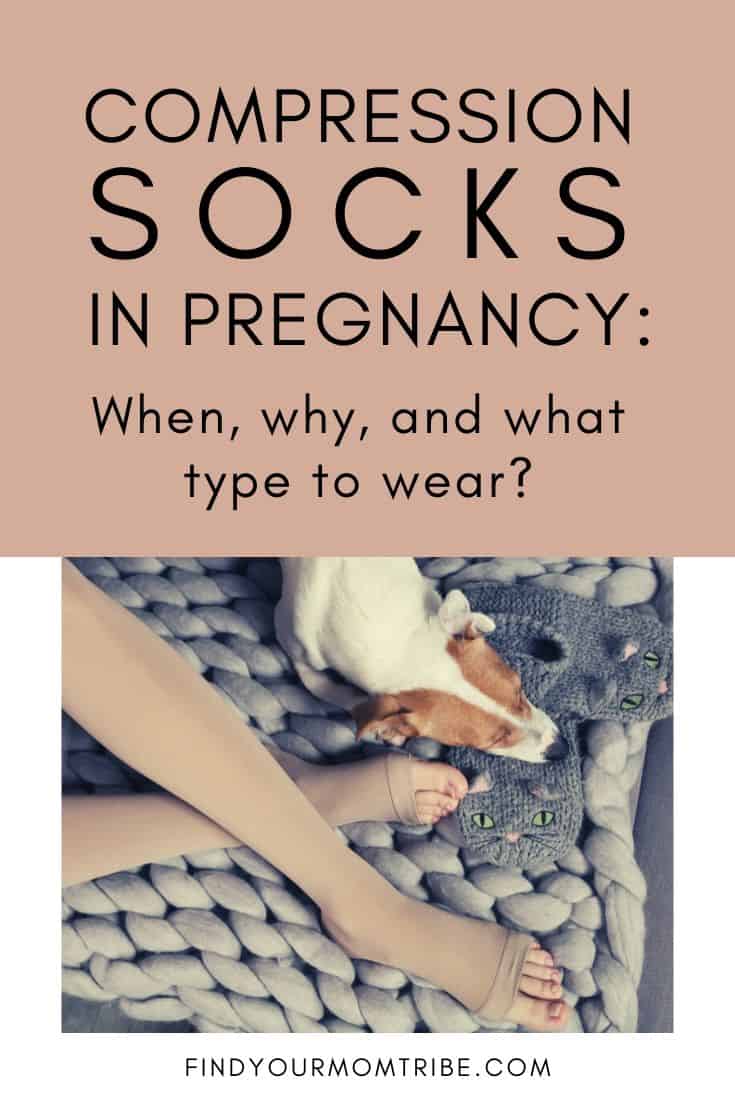
We love honesty! Find Your Mom Tribe is an Amazon Associate and we earn from qualifying purchases through affiliate links at no extra cost to you. Please see our full Amazon Affiliate disclosure for more information.

